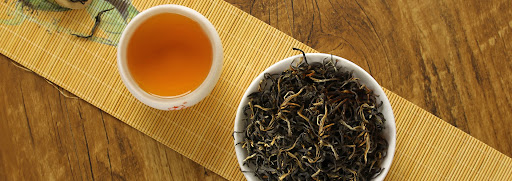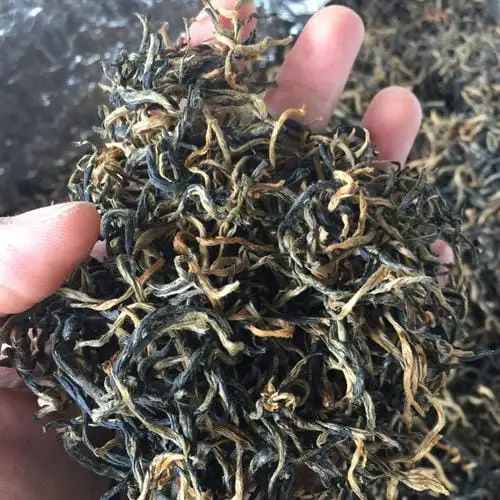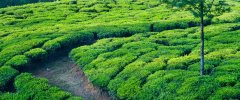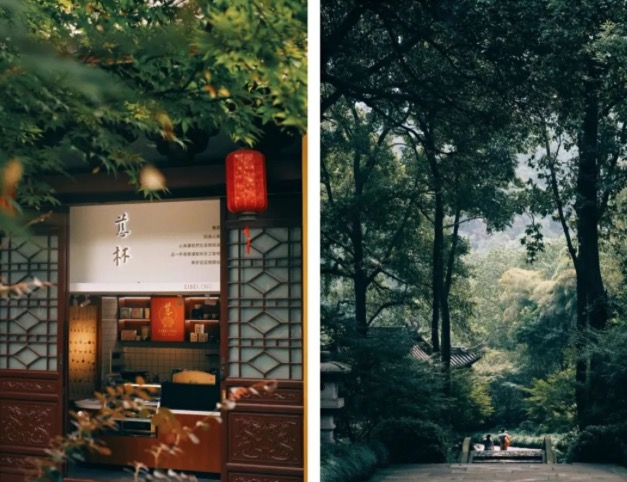The grading system of Yingde Black Tea explains in detail the price of Jin Yinghong and Jinhao Special Grade Yinghong No. 9.
The origin of the name Yinghong 9
Yinghong No. 9 tea is much more famous than Yingde black tea. This is the top of Yingde tea, and it is also the name of tea tree. Do you know where this strange name comes from?
We just mentioned that these Yunnan tea trees were transplanted to England and Germany in 1956. Among them, 22 clone seedlings were selected and the leaf experiment was carried out in 1964. The results show that No. 17 tea tree can produce the best black tea.
Therefore, the tea master cloned this kind of tea tree and mass produced the best Anglo-German black tea. The question is how to name this kind of tea to distinguish it from other teas.
The number 9 means longevity and dignity in Chinese culture. Therefore, for auspicious reasons, the tea ceremony master changed the 17th to the 9th. English refers to Yingde and red refers to black tea; this is the origin of Yinghong No. 9 tea. In the local language, Yinghong sounds like a hero.
Yinghong No. 9 tea had a prosperous time. After publication, national leaders highly recognized its quality and helped it develop into a public brand. In the West, it is said that the Queen of England also likes it and even entertains guests with Yinghong 9. When Mr. Putin visited China, he drank full of praise.

Develop
Almost all Chinese tea is invented by the rich experience of tea masters. But Anglo-German black tea is born in a different way.
It was created under the guidance of the state and is the product of the era of planned economy. The aim is to export to the West, earn foreign exchange and help economic growth. As Anglo-German black tea is seldom sold in China, it is almost always broken at first. This is to cater to the tea brewing habits of Westerners.
Due to the development of large black tea producing countries such as India and Sri Lanka, the natural disadvantage in distribution channels makes Anglo-German black tea lag behind in the competition. Because of its short history, it is not as famous as Keemun Black Tea, who is also from China. Yingde black tea is gradually becoming unknown.
In this situation, tea masters began to produce whole-leaf Yingde tea and develop the domestic market. Although Chinese people are not interested in black tea, Anglo-German black tea has won the attention and hearts of some domestic tea friends because of its excellent quality.
Fortunately, the laboratory where Yinghong 9 tea tree was found is still in operation. Scientists have been studying, hoping to find a better new tea tree than Yinghong 9, so that Yingde black tea can return to its former glory.
The grading system of Yingde Black Tea
Most people think that Yinghong No. 9 tea is Yingde black tea; this may be a misunderstanding. As we said before, Yinghong 9 is the name of a tea tree, a brand, and a grade of Yingde black tea.
After years of research, the local tea laboratory has developed more grades of Anglo-German black tea according to different picking standards and processing methods.
Yinghong No. 9: picking standard of one heart and two leaves
Jin Yinghong: two leaves of one heart picked before April 30
Golden hair: the picking standard of a tender bud and the first leaf
Jin Hao: just pick the buds

How to brew Yingde black tea
Yingde black tea dissolves quickly. It doesn't take long; a porcelain bowl or teapot seems to be a good choice.
Preheat the tea set
Put the leaves in, the just full bottom is just right
Add hot water and pour it out quickly. This is used to preheat and wash the leaves.
Soak in 95 ℃ water for 10-15 seconds
Pour the tea into a reasonable cup through the brewer to balance the concentration.
Enjoy
Important Notice :
前街咖啡 FrontStreet Coffee has moved to new addredd:
FrontStreet Coffee Address: 315,Donghua East Road,GuangZhou
Tel:020 38364473
- Prev

Yingde black tea Yinghong 9 what grade of tea does Yingde black tea belong to? description of the taste characteristics of Yingde black tea
In addition to tea such as Dayeqing and duck shit green, there is also a charming tea that also comes from Guangdong, China; it is Yingde black tea. Tied with Keemun Black Tea and Yunnan black tea in the top three of Chinese black tea. Although it is not as famous as the other two, or you may never have heard of it. But you may know Yinghong No. 9 tea, which is the grade of Yingde black tea. What is the history of Yingde black tea?
- Next

Are there many cafes in Hangzhou? the coffee shop in Yongfu Temple in Hangzhou Cafe Cafe American coffee lattes are delicious.
"Coffee" has been played to a new level. Temples have also come to lay out the coffee field. According to media reports, Hangzhou Yongfu Temple also quietly opened a coffee shop, have to sigh: Hangzhou "interesting" cafes are really many ah! It is understood that the temple cafe, called Cibei, is located at the exit of Yongfu Temple. Interestingly, this cafe and the ones on the market
Related
- What effect does Italian American coffee with filter paper have? Will coffee taste better if it is put on filter paper at the bottom of the powder bowl?
- What is the color difference in coffee beans? What are the characteristics of honey processed coffee beans? Why are the anaerobically treated coffee beans uneven in color?
- How does novice Xiaobai quickly get started and make coffee? Newbies learn to make coffee by hand and share the specific steps and process process!
- Costa tea has a shelf life of 100 years?! Expert: Unable to verify
- It's a huge uproar! American milk addition was rejected by Manner employees?!
- Mocha pot coffee bean recommendations| How fine and how much powder should be used for grinding? What parameter ratios do I need to use to make milk with Mocha pot coffee?
- What are the characteristics of the world's top ten coffee beans treated with Costa Rica honey? How to make black honey kadura from Tarazhu Pilon Processing Plant taste good?
- How to make deep-roasted coffee? What grinding water temperature does authentic Jamaica Blue Mountain No. 1 coffee use to brew it well?
- Selected high-grade rose summer coffee flavor tasting guide Why Panama rose summer has the aroma of flowers and fruits
- What equipment does a novice Xiaobai need to buy to learn to make coffee? Filter cup electronic scale bean grinder manual flushing pot purchase guide

